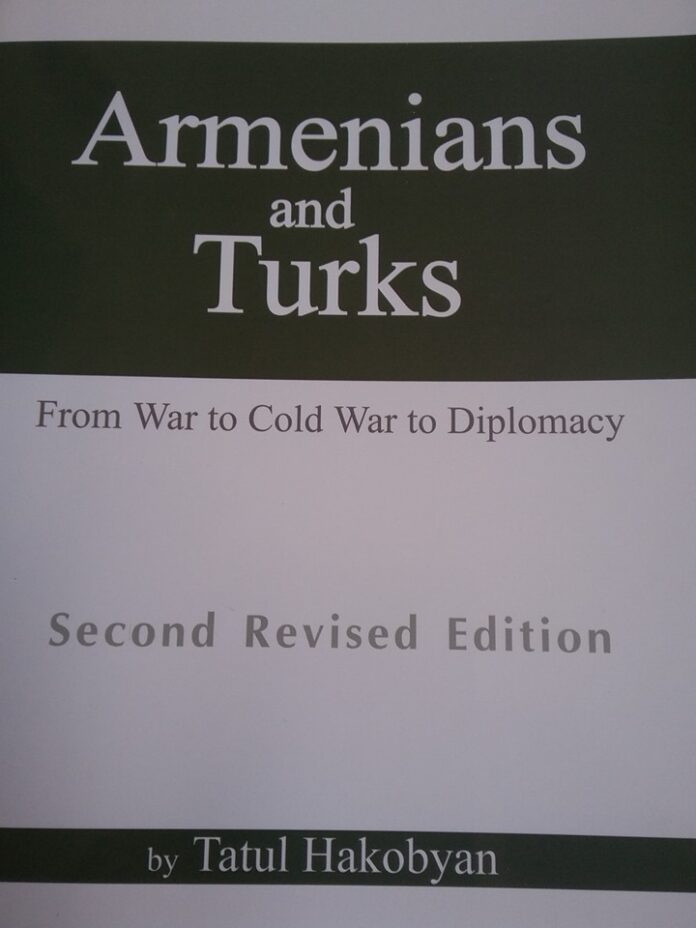The Republic of Armenia, covering a territory of 12,0001 square kilometres, was born in May 1918. Despite the internal clashes and uprisings during the months of June-February, 1918, the government took on the obligation and the liability. Many cursed that day and considered the Batum agreement signed with the Turks to be treacherous but, opposing public opinion, the first Prime Minister Hovhannes Kajaznuni was convinced that Armenia must fulfill the provisions of that agreement and maintain inter-state relations with the Ottoman government.2
The first session of Armenia’s Council, the lawmaking body of the newly-formed republic, was held in the hall of the city club of Yerevan on August 1. The representatives of Germany, Austria-Hungary, the Ottoman Empire, the Persian ambassador, and representatives of the Russian and Muslim National Councils were present at the event. In deep silence, Kajaznuni climbed the podium and read the opening speech, which was translated into Russian and Turkish.
On August 3, during the second session of Armenia’s Council, Kajaznuni read the government’s announcement, “To reinforce the peace with the Ottoman government and establish good neighbourly relations with them, strictly fulfill all those responsibilities that we have taken upon ourselves towards the Ottoman Empire and check that the Ottoman Empire does the same towards us, and, in particular, resolve the issues of the withdrawal of Ottoman forces from our country and the return of refugees.”3
In January of 1919, on the eve of the Paris Peace Conference, Kajaznuni was content with modest borders, even agreeing to have no access to the sea. The nationalists were insisting on the idea of an Armenia from sea to sea, with Trebizond and Alexandretta as exit ports. The number among Dashnaks supporting an Armenia from sea to sea was not small, but the majority had settled on the idea of an exit at least to the Black Sea.4
There were figures within the ranks of the ruling ARF Party who, deep down, were convinced that the Turks could destroy Armenia’s independence. In Artashes Babalyan’s5 words, the main Turkish forces were aimed against Baku and that was one of the reasons why it remained calm in small, weak Armenia until October 30, 1918, when a ceasefire was signed heralding the First World War defeat of the Ottoman Empire and the salvation of the Armenians. During those months, “The main role fell to Aram Manukyan. He was running internal affairs and the welfare and agriculture sectors. He was the one destined to be in contact with Mehmet Ali Pasha, the representative of the Ottoman Empire. In September, after the fall of Baku, Turkey’s hands were freed and they could have suffocated the republic and ended the existence of the Armenian nation, but they did not do so. They were worried about the onslaught of attacks in Syria and Palestine.6 At any rate, the Turkish government paid no attention to Armenia. Perhaps it was willing to preserve its independent existence.”7
- The territory of the Republic of Armenia could not be precisely 12,000 square kilometres since, according to the Treaty of Batum, only the border with the Ottoman Empire on the one hand and those among Georgia, Armenia, and Azerbaijan on the other hand, had been decided, as is noted and explained in the second article of the treaty. And so, 12,000 square kilometres is an approximate number, since the borders among newly-independent Armenia, Georgia, and Azerbaijan were not specified.
- Ktrich Sardaryan, “Hayastany hamashkharhayin heghapokhutyan arevelyan khachmerukum (inchpes kortsanvets Hayastani Hanrapetutyuny)” (in Armenian,“Armenia at theEastern Crossroads of the WorldRevolution (How the Republic of Armenia was Reduced to Defeat?”], Yerevan, “Nairi”, 2007, p. 6.
- Simon Vratsyan, “Hayastani Hanrapetutyun,” p. 197.
- Op. cit., p. 209.
- Artashes Babalyan was born in Shushi, Nagorno Karabakh, in 1886. He was prominent public figure and, member of the ARF-Dashnaktsutyun, and a member of the Armenian National Council in 1917. During the period October, 1919 – May, 1920, he occupied the position of Minister of Welfare. On August 10, 1920, together with Arshak Jamalyan, he participated in negotiations in Tiflis with Boris Legran, representative of the Bolsheviks, accepting the provisional Red Army occupation of Zangezur and Nakhijevan, while recognising the independence of the Republic of Armenia and accepting the Armenian administration of the Yerevan-Julfa railway. He died in 1959 in Tehran, Iran.
- In 1917, the British had mounted a broad attack on Jerusalem, and had occupied it. After mid-September, 1918, one of the battles of WWI took place around Mount Arara in Palestine, during which the Allies defeated the Ottoman forces. During the Arara battle, the Armenian or Eastern Legion, which was formed in 1916 under an agreement signed in London between Mark Sykes (England), Georges-Picot (France,) and Boghos Nubar, the President of the Armenian National Delegation, together with the Allies, was fighting against the Turks. As part of France’s forces, Armenian soldiers were to participate in battles against the Ottoman armies on the Syria-Palestine front. In return, France had promised to grant autonomy to the Armenians in Cilicia after the war. In November 1918, the Armenian legion entered Cilicia. Later, when France started appeasing the Kemalists, the Armenian legion was dissolved in August 1920.
- Artashes Babalyan, “Ejer Hayastani ankakhutyan patmutenen” (in Armenian,“Pages from the Historyof Armenia’sIndependence”), Hayrenik monthly, Boston, number 9, July, 1923.
This chapter is from Tatul Hakobyan’s book- ARMENIANS and TURKS












